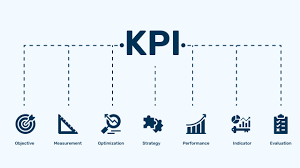
Aligning Short-Term Hustle with Long-Term Vision
In the ever-evolving landscape of business, Key Performance Indicators (KPIs) serve as the North Star, guiding companies towards their strategic goals. But how do you set KPIs that not only track progress but also ignite progress?
The Anatomy of KPIs: Short, Medium, and Long-Term
At the heart of effective KPIs is their ability to measure success at different intervals and against varied objectives:
- Short-term KPIs – The Sprinters: These are the daily to monthly metrics, the sprints in the marathon of business growth. They might be as simple as daily production numbers or as complex as weekly engagement rates on a new software platform. They answer the question, “What are we achieving now?”
- Medium-term KPIs – The Middle-Distance Runners: Quarterly or bi-annual indicators that ensure the sprinters aren’t losing sight of the finish line. They are your check-in points, like customer satisfaction scores or quarterly sales growth, answering, “How are we progressing?”
- Long-term KPIs – The Marathoners: Aligned with your company’s vision and mission, these yearly metrics are the ultimate measures of strategic success, like annual market share or year-over-year revenue growth. They answer the enduring question, “Where are we going?”
Crafting Effective KPIs: A Blueprint for Success
To create KPIs that are not just numbers on a chart, businesses should:
- Strategic Alignment: Marry each KPI to your vision and mission. If a KPI doesn’t serve your ultimate purpose, it’s just a distraction.
- Specificity and Measurability: Abstract goals breed abstract results. Make your KPIs as concrete and quantifiable as possible.
- Relevance: Every KPI should matter to those who are being measured by it. Irrelevant KPIs can lead to disengagement and misdirection.
- Timeliness: Without deadlines, KPIs are wishes. Set timelines to inject urgency and focus.
- Attainability: KPIs should stretch capabilities without breaking spirits. Unrealistic goals can be demotivating.
- Adaptability: Review and revise your KPIs as your business and the external environment evolve.
From Metrics to Mission: Embedding KPIs into Corporate DNA
Integrating KPIs with a company’s vision and mission is a multistep process:
- Strategic Planning: Your company’s strategic planning sessions are the crucible in which KPIs are forged.
- Communication: Make sure everyone knows what the KPIs are, what they mean, and why they matter.
- Integration: Embed KPIs into the rhythm of business life, from morning huddles to annual reports.
- Informed Decision-Making: Let KPIs inform where you invest, what you prioritize, and when you pivot.
- Cultural Infusion: Cultivate a mindset that reveres data, relishes feedback, and relentlessly pursues improvement.
KPIs are more than just numbers—they are narratives. They tell the story of where a company is, where it’s going, and how quickly it’s getting there. By setting and managing KPIs with precision and care, businesses can ensure that each chapter of their story is one step closer to a triumphant conclusion.
